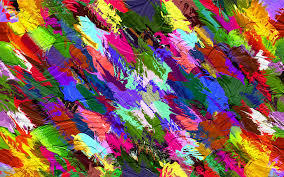Whole Brain Thinking
 According to the theory of left-brain or right-brain dominance, each side of the brain controls different types of thinking. Additionally, people are said to prefer one type of thinking over the other. It has been shown that in many ways the two parts of brain work separately yet without apparent conflict. Do they process information differently?
According to the theory of left-brain or right-brain dominance, each side of the brain controls different types of thinking. Additionally, people are said to prefer one type of thinking over the other. It has been shown that in many ways the two parts of brain work separately yet without apparent conflict. Do they process information differently?
Left-brain is more analytical; and right-brain is more intuitive: According to the left-brain, right-brain dominance theory, the right side of the brain is best at expressive and creative tasks. The left-side of the brain is considered to be adept at tasks that involve logic, language and analytical thinking. In general, the left and right hemispheres of our brain process information in different ways. The focus of the left brain is verbal, processing information in an analytical and sequential way, looking first at the pieces then putting them together to get the whole. Left brain thinking is verbal and analytical. Right brain is nonverbal and intuitive, using pictures rather than words. Is the Right Hemisphere more connected? Some research shows the left hemisphere doesn't have many connections to other parts of the brain as compared to the right hemisphere.The right hemisphere is the source of creativity, and it also has very far flung connections throughout the brain. And the innovative aha arises when original connections are made.
The human brain function is far too complex to be so simplistic as “half-half.” We all have the right and left halves of our brain connected by a dense jungle of neurons called corpus callosum which enable both the halves of the brain to talk to each other. The contention that we have a rational left brain and an intuitive, artistic right side is fable: humans use both hemispheres of the brain for all cognitive functions. The left brain/right brain notion originated from the realization that many (though not all) people process language more in the left hemisphere and spatial abilities and emotional expression more in the right. Psychologists have used the idea to explain distinctions between different personality types. In education, programs emerged that advocated less reliance on rational “left brain” activities. Brain-imaging studies show no evidence of the right hemisphere as a locus of creativity. And the brain recruits both left and right sides for both reading and math. Though in reality, individual differences in cognitive strengths. Some are more creative; others are more analytical than others.
 Totality is important. The brain is to mind as the eye is to sight. Brain is the hardware and the mind is the software with the totality in action, hardware plus software. The wholeness (hardware + software) is important to create quality thoughts. To look for the mind within the brain, seems then as silly as looking for the music between the strings of a piano. If we realize that the brain consists mostly out of “wires” guiding electrical impulses in feedforward- and feedback-controlled loops, that cannot even tell our senses apart, it is difficult to imagine where to find the mind. It might start getting far easier if we assume the mind as an emergent property, created, millisecond by millisecond, partially by the brain and partially by its environment. Mind - or 'consciousness' - is proposed as a 'quantum mind' by some physicists. Others, also reputed scientists dispute this, but invoke a more fundamental structure. According to social constructionism, the mind would more be between people, in their interaction.
Totality is important. The brain is to mind as the eye is to sight. Brain is the hardware and the mind is the software with the totality in action, hardware plus software. The wholeness (hardware + software) is important to create quality thoughts. To look for the mind within the brain, seems then as silly as looking for the music between the strings of a piano. If we realize that the brain consists mostly out of “wires” guiding electrical impulses in feedforward- and feedback-controlled loops, that cannot even tell our senses apart, it is difficult to imagine where to find the mind. It might start getting far easier if we assume the mind as an emergent property, created, millisecond by millisecond, partially by the brain and partially by its environment. Mind - or 'consciousness' - is proposed as a 'quantum mind' by some physicists. Others, also reputed scientists dispute this, but invoke a more fundamental structure. According to social constructionism, the mind would more be between people, in their interaction.To adapt to the over-complex, hyper-connected digital world, one needs to train self how to engage whole brain, to think both creatively and critically, analytically and synthetically, linearly and nonlinearly, to embrace more 'Aha Moment" for creating fresh ideas or identify 'trigger point" for decision making. So the whole-brainer is needed. Follow us at: @Pearl_Zhu
Published on July 05, 2015 23:46
No comments have been added yet.



